Melon growing tricks are the secret weapon every gardener needs to unlock a summer bounty of juicy, flavorful melons right in their own backyard! Forget those bland, store-bought melons – imagine sinking your teeth into a perfectly ripe, homegrown cantaloupe or watermelon, bursting with sweetness. Sounds amazing, right?
For centuries, melons have been cultivated across the globe, from the arid landscapes of Africa to the sun-drenched fields of Asia. They were prized by ancient civilizations for their refreshing taste and nutritional value. Today, the tradition continues, and with a few clever melon growing tricks, you too can experience the joy of harvesting your own delicious melons.
But let’s be honest, growing melons can sometimes feel like a gamble. You put in the effort, but often end up with small, tasteless fruits, or worse, plants that never even produce! That’s where these DIY hacks come in. I’m going to share some simple, yet effective techniques that will help you overcome common challenges and maximize your melon yield. From soil preparation to pollination secrets, I’ve got you covered. Get ready to transform your garden into a melon paradise!
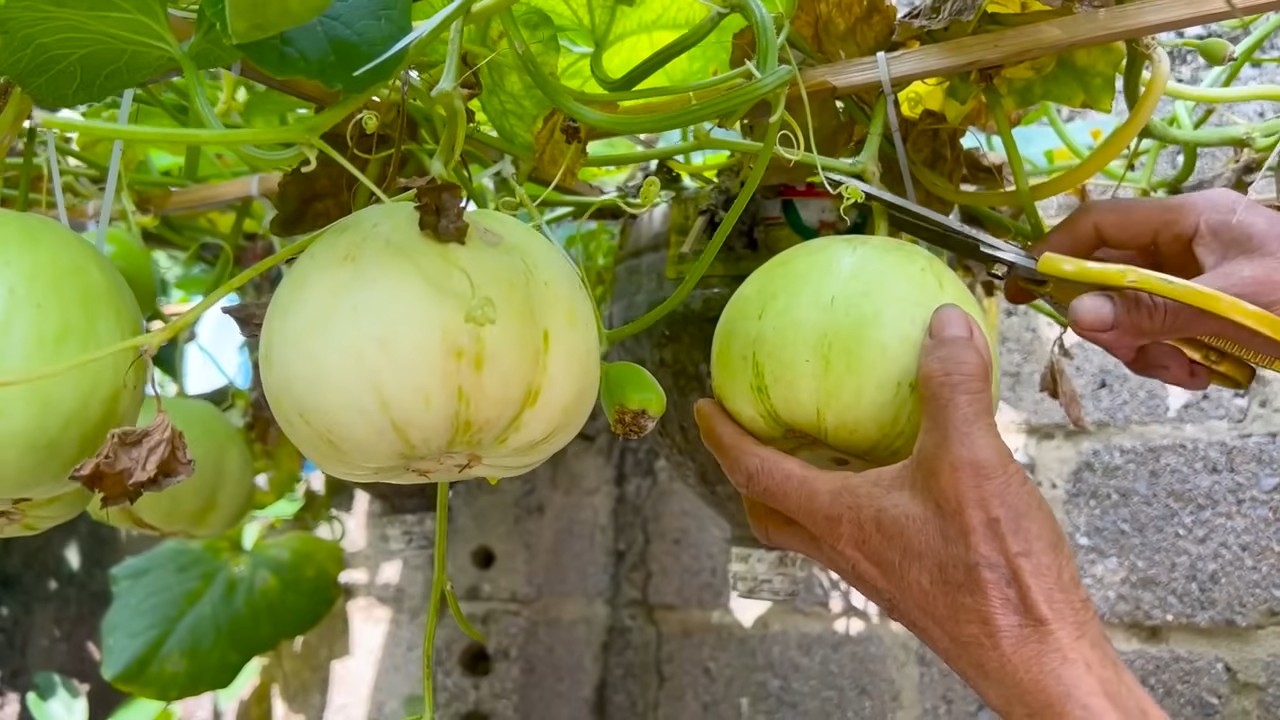
Unlock the Secrets to Growing Juicy, Delicious Melons at Home!
Hey there, fellow gardening enthusiasts! I’m so excited to share my tried-and-true methods for growing the most amazing melons you’ve ever tasted, right in your own backyard. Forget those bland, store-bought melons – we’re talking about sweet, fragrant, and incredibly juicy homegrown goodness. I’ve learned a lot over the years, and I’m going to break down everything you need to know, from choosing the right variety to harvesting your prize-winning fruit. Let’s get started!
Choosing the Right Melon Variety
Before we even think about planting, it’s crucial to pick the right melon variety for your climate and space. Not all melons are created equal! Some thrive in hot, arid conditions, while others prefer a more temperate environment. Also, consider how much space you have. Some melon varieties are sprawling vines, while others are more compact.
Here’s a quick rundown of some popular melon types and their characteristics:
* Watermelon: The classic summer treat! Watermelons need plenty of space and sunshine. Look for varieties like ‘Sugar Baby’ (smaller and earlier maturing), “Crimson Sweet” (classic flavor), or “Jubilee” (large and oblong).
* Cantaloupe: Known for its sweet, orange flesh and netted rind. Cantaloupes are generally easier to grow than watermelons. ‘Athena’ and ‘Hales Best Jumbo’ are reliable choices.
* Honeydew: A smooth, pale green melon with a delicate flavor. Honeydews require a long growing season. ‘Honeycrisp’ is a popular variety.
* Galia: A cross between a cantaloupe and a honeydew, offering a unique flavor and aroma. Galia melons are relatively easy to grow.
* Personal-Sized Melons: If space is limited, consider smaller varieties like ‘Sugar Kiss’ cantaloupe or ‘Mini Love’ watermelon. These are perfect for container gardening or small gardens.
Pro Tip: Check your local extension office or garden center for recommendations on melon varieties that perform well in your area.
Preparing Your Melon Patch
Melons are heavy feeders, meaning they need nutrient-rich soil to thrive. Proper soil preparation is essential for a bountiful harvest.
* Sunlight: Melons need at least 6-8 hours of direct sunlight per day. Choose a location that gets plenty of sun.
* Soil: Melons prefer well-drained, sandy loam soil with a pH between 6.0 and 6.8.
* Amendments: Amend your soil with plenty of organic matter, such as compost, well-rotted manure, or leaf mold. This will improve drainage, aeration, and nutrient content.
* Fertilizer: Incorporate a slow-release fertilizer into the soil before planting. Look for a fertilizer that is high in phosphorus and potassium, which are essential for fruit development.
Planting Your Melon Seeds or Transplants
You can start melon seeds indoors 4-6 weeks before the last expected frost, or you can direct sow them into the garden after the soil has warmed up to at least 70°F (21°C).
Starting Seeds Indoors:
1. Choose your containers: Use seed starting trays or small pots filled with seed starting mix.
2. Sow the seeds: Plant the seeds about 1 inch deep.
3. Water gently: Keep the soil moist but not soggy.
4. Provide warmth and light: Place the trays or pots in a warm location (75-85°F/24-29°C) and provide plenty of light, either from a sunny window or a grow light.
5. Harden off the seedlings: Before transplanting the seedlings into the garden, gradually acclimate them to outdoor conditions by exposing them to increasing amounts of sunlight and wind over a period of 7-10 days.
Direct Sowing Seeds:
1. Prepare the soil: Make sure the soil is warm and well-drained.
2. Create mounds or hills: Plant the seeds in small mounds or hills, about 1-2 feet apart. This will help with drainage and warming of the soil.
3. Sow the seeds: Plant 2-3 seeds per hill, about 1 inch deep.
4. Water gently: Keep the soil moist until the seeds germinate.
5. Thin the seedlings: Once the seedlings have emerged, thin them to one plant per hill.
Transplanting Seedlings:
1. Choose a cloudy day: Transplanting on a cloudy day will help reduce transplant shock.
2. Dig a hole: Dig a hole that is slightly larger than the root ball of the seedling.
3. Gently remove the seedling: Carefully remove the seedling from its container, being careful not to damage the roots.
4. Place the seedling in the hole: Place the seedling in the hole and backfill with soil.
5. Water thoroughly: Water the seedling thoroughly after planting.
Caring for Your Melon Plants
Once your melon plants are established, it’s important to provide them with proper care to ensure a healthy and productive harvest.
* Watering: Melons need consistent watering, especially during fruit development. Water deeply and regularly, but avoid overwatering, which can lead to root rot. Aim for about 1-2 inches of water per week. Drip irrigation or soaker hoses are ideal for delivering water directly to the roots.
* Fertilizing: Side-dress your melon plants with a balanced fertilizer every 2-3 weeks. You can also use a liquid fertilizer, such as fish emulsion or seaweed extract.
* Weeding: Keep your melon patch free of weeds, which can compete with the plants for nutrients and water. Mulching with straw or black plastic can help suppress weeds and retain moisture.
* Pruning: Some melon varieties, such as watermelons, can benefit from pruning. Pruning can improve air circulation and sunlight penetration, which can help prevent disease and promote fruit development. Remove any suckers (small shoots that grow from the base of the plant) and any leaves that are touching the ground.
* Pollination: Melons rely on bees and other pollinators to produce fruit. If you’re not seeing a lot of bees in your garden, you can hand-pollinate the flowers. To hand-pollinate, use a small paintbrush to transfer pollen from the male flowers to the female flowers. Female flowers have a small fruit at the base of the flower, while male flowers do not.
Protecting Your Melons from Pests and Diseases
Melons can be susceptible to a variety of pests and diseases. Here are some common problems and how to deal with them:
* Cucumber beetles: These small, yellow and black beetles can damage leaves and transmit diseases. Control them with insecticidal soap or neem oil.
* Squash bugs: These brown, shield-shaped bugs can suck the sap from leaves and stems. Handpick them off the plants or use insecticidal soap.
* Aphids: These small, sap-sucking insects can weaken plants and transmit diseases. Control them with insecticidal soap or a strong spray of water.
* Powdery mildew: This fungal disease causes a white, powdery coating on the leaves. Improve air circulation and treat with a fungicide.
* Fusarium wilt: This soilborne disease causes wilting and yellowing of the leaves. Plant resistant varieties and practice crop rotation.
Pro Tip: Regularly inspect your melon plants for signs of pests or diseases. Early detection and treatment can prevent serious problems.
Supporting Your Growing Melons
As your melons grow, they may need some support to prevent them from rotting on the ground or breaking the vines.
* Melon cradles: Use melon cradles (small platforms made of wood or plastic) to lift the melons off the ground.
* Trellises: Train melon vines to grow up a trellis. This is especially useful for smaller melon varieties.
* Slings: For larger melons growing on a trellis, use slings made of fabric or netting to support the fruit.
Harvesting Your Melons
Knowing when to harvest your melons is crucial for getting the best flavor and texture. Here are some general guidelines:
* Watermelons: Look for a dull, thumping sound when you tap the melon. The tendril closest to the melon should be brown and dry. The underside of the melon (where it rests on the ground) should be yellow or cream-colored.
* Cantaloupes: The melon should slip easily from the vine when gently tugged. The rind should be a golden color and have a fragrant aroma.
* Honeydews: The melon should have a slightly waxy feel and a pale yellow color. The blossom end should be slightly soft.
Pro Tip: Don’t be afraid to taste-
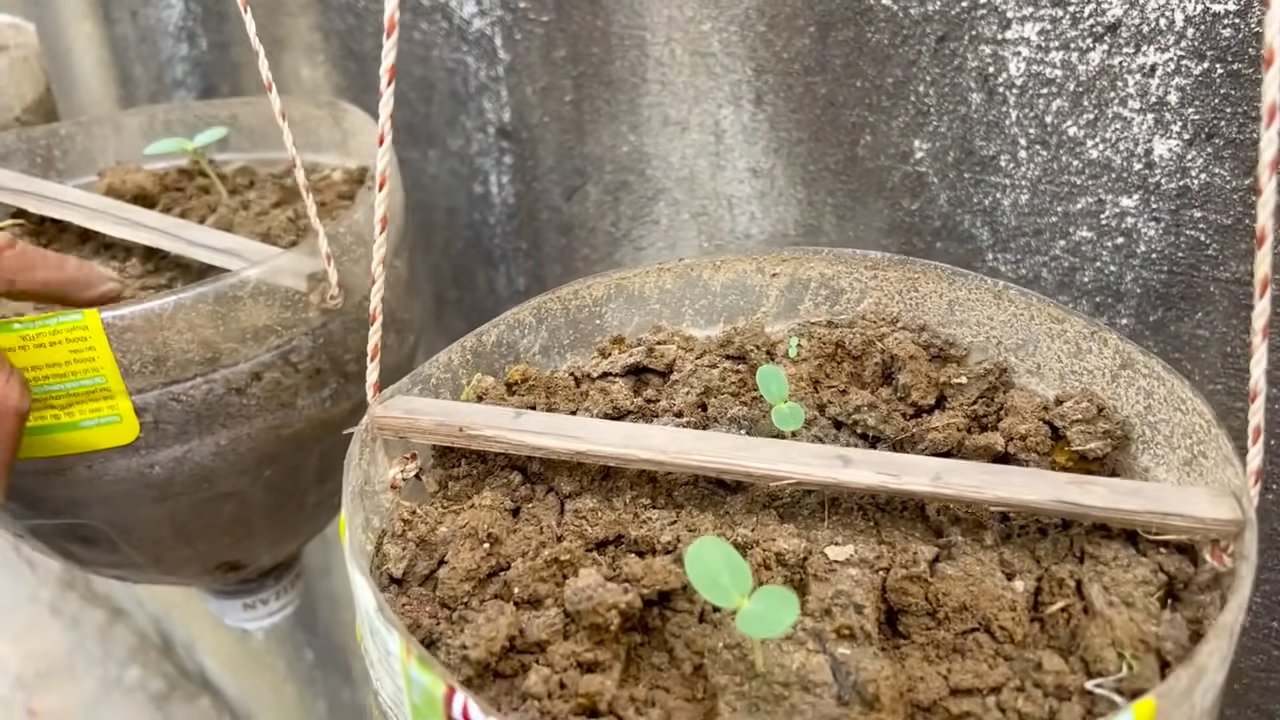
Conclusion
So, there you have it! Mastering these simple yet effective melon growing tricks can truly transform your gardening experience and reward you with the sweetest, most succulent melons you’ve ever tasted. Forget those bland, store-bought disappointments; imagine sinking your teeth into a homegrown cantaloupe bursting with flavor, or a watermelon so juicy it drips down your chin. That’s the promise of these techniques.
Why is this a must-try? Because it’s about more than just growing melons. It’s about taking control of your food source, connecting with nature, and experiencing the satisfaction of nurturing something from seed to table. It’s about reducing your reliance on commercially grown produce, often laden with pesticides and shipped from afar. And let’s be honest, it’s about bragging rights! Imagine the envy of your neighbors when you present them with a perfectly ripe, homegrown melon.
But the beauty of these melon growing tricks lies in their adaptability. Feel free to experiment! Try different varieties of melons to find your favorites. Watermelons, cantaloupes, honeydews – the possibilities are endless. Consider companion planting with herbs like basil or marigolds to deter pests naturally. Explore different soil amendments to optimize drainage and nutrient content. You can even try vertical gardening techniques to save space and create a stunning visual display.
Don’t be afraid to get your hands dirty and embrace the learning process. Gardening is a journey, not a destination. There will be successes and setbacks, but every experience is a valuable lesson. The key is to stay curious, keep experimenting, and never stop learning.
We are confident that these melon growing tricks will significantly improve your harvest and the overall quality of your melons. The difference between a mediocre melon and an exceptional one often comes down to these simple adjustments in your growing practices. From selecting the right seeds to providing adequate sunlight and water, every step plays a crucial role in the final outcome.
Now, it’s your turn! We encourage you to put these melon growing tricks to the test and see the results for yourself. Start small, perhaps with just a few plants, and gradually expand your garden as you gain confidence. Remember to document your progress, take notes on what works and what doesn’t, and most importantly, have fun!
We’re eager to hear about your experiences. Share your successes, your challenges, and any variations you’ve tried in the comments below. Let’s create a community of melon enthusiasts, sharing tips and inspiring each other to grow the best melons possible. Your insights could be invaluable to other gardeners, and together, we can all achieve melon-growing mastery. So, grab your seeds, prepare your soil, and get ready to enjoy the sweet taste of success! Happy gardening!
Frequently Asked Questions (FAQ)
What are the most common mistakes people make when growing melons?
One of the biggest mistakes is not providing enough sunlight. Melons are sun-loving plants and need at least 6-8 hours of direct sunlight per day to thrive. Another common error is overwatering, which can lead to root rot. It’s crucial to water deeply but infrequently, allowing the soil to dry out slightly between waterings. Poor soil drainage is also a frequent culprit, as melons prefer well-draining soil. Finally, neglecting to provide adequate support for vining varieties can result in damaged fruits and reduced yields.
How do I know when my melon is ripe?
Determining ripeness varies slightly depending on the type of melon. For watermelons, look for a dull, rather than shiny, rind. The spot where the melon rests on the ground (the ground spot) should be yellow or cream-colored. Thumping the melon can also be helpful; a ripe watermelon will have a deep, hollow sound. For cantaloupes, a ripe melon will have a fragrant aroma and the stem will slip easily from the fruit when gently tugged. Honeydews are ripe when the blossom end (opposite the stem) is slightly soft and yields to gentle pressure.
What kind of fertilizer should I use for melons?
Melons benefit from a balanced fertilizer with a slightly higher phosphorus content to promote flowering and fruit development. A fertilizer with an NPK ratio of 10-10-10 or 5-10-5 is a good starting point. You can also amend the soil with compost or aged manure to provide a slow-release source of nutrients. Avoid over-fertilizing with nitrogen, as this can lead to excessive foliage growth at the expense of fruit production.
How can I protect my melons from pests and diseases?
Preventative measures are key to minimizing pest and disease problems. Start by selecting disease-resistant varieties. Practice crop rotation to prevent soilborne diseases from building up. Keep the garden clean and free of weeds, which can harbor pests and diseases. Use row covers to protect young plants from insect pests. Monitor plants regularly for signs of pests or diseases and take action promptly. Organic pest control options include insecticidal soap, neem oil, and diatomaceous earth. For fungal diseases, copper fungicides or baking soda sprays can be effective.
Can I grow melons in containers?
Yes, you can grow melons in containers, but it’s important to choose the right variety and container size. Bush or dwarf varieties are best suited for container gardening. Use a large container, at least 20 gallons in size, with good drainage. Provide a sturdy trellis or support for the vines. Water and fertilize regularly, as container-grown plants tend to dry out and deplete nutrients more quickly.
What are some good companion plants for melons?
Companion planting can help deter pests, attract beneficial insects, and improve soil health. Good companion plants for melons include basil, marigolds, nasturtiums, and radishes. Basil repels aphids and whiteflies, while marigolds deter nematodes and other soil pests. Nasturtiums attract beneficial insects like ladybugs and hoverflies, which prey on aphids. Radishes can help break up compacted soil and improve drainage.
How much water do melons need?
Melons need consistent moisture, especially during fruit development. Water deeply but infrequently, allowing the soil to dry out slightly between waterings. Avoid overhead watering, as this can promote fungal diseases. Drip irrigation or soaker hoses are the best way to water melons, as they deliver water directly to the roots. Mulching around the plants can help retain moisture and suppress weeds.
What is the best soil for growing melons?
Melons prefer well-draining, sandy loam soil with a pH of 6.0 to 6.8. Amend heavy clay soil with compost, aged manure, or other organic matter to improve drainage and aeration. Raised beds can also be helpful in areas with poor drainage. Conduct a soil test to determine the nutrient content and pH of your soil and amend accordingly.
How do I prevent blossom-end rot in melons?
Blossom-end rot is a common problem in melons, caused by a calcium deficiency. To prevent blossom-end rot, ensure that your soil has adequate calcium levels. Amend the soil with lime or bone meal before planting. Maintain consistent soil moisture, as fluctuations in moisture can interfere with calcium uptake. Avoid over-fertilizing with nitrogen, as this can also contribute to blossom-end rot.
What if my melon vines are producing flowers but no fruit?
This could be due to several factors, including lack of pollination, insufficient sunlight, or nutrient deficiencies. Melons require pollination to set fruit, so ensure that there are plenty of bees and other pollinators in your garden. You can also hand-pollinate the flowers by transferring pollen from the male flowers to the female flowers. Provide adequate sunlight and fertilize with a balanced fertilizer to promote fruit development.


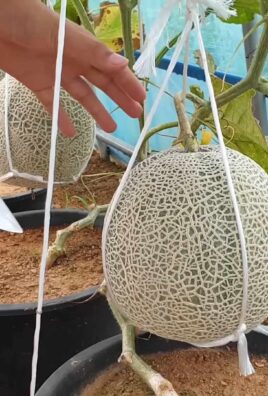
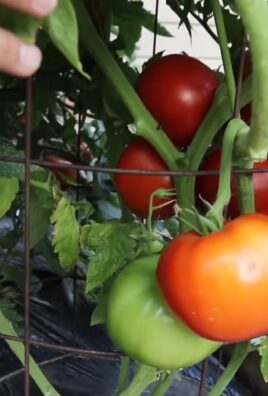
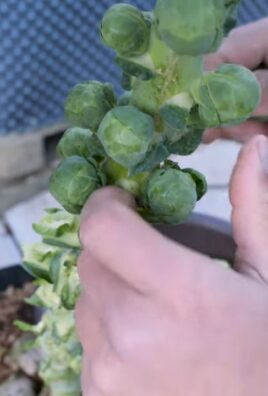
Leave a Comment